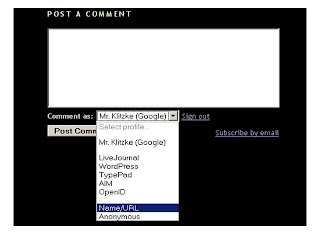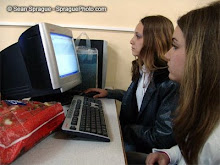
http://www.slideshare.net/bklitzke/globalization-2766851
Click On The Link Above To View The Presentation

 All students must read and follow these guidelines for internet safety. Also, if your parents or guardians do not allow you to go to certain sites (such as Facebook), that is okay. You must take into account their preferences and values in this assignment. There are more than enough technology activities that you can do without going to the sites your parent(s) do not value. Once you have read and understand the link, and this statement, please leave a post here with your first name and block to sign off on the permission.
All students must read and follow these guidelines for internet safety. Also, if your parents or guardians do not allow you to go to certain sites (such as Facebook), that is okay. You must take into account their preferences and values in this assignment. There are more than enough technology activities that you can do without going to the sites your parent(s) do not value. Once you have read and understand the link, and this statement, please leave a post here with your first name and block to sign off on the permission.To View The Assignment:
or
or


Turn in your video project by following the directions below.






The students in Modern American History created virtual museums depicting their knowledge of World War I. If you would like to view their museums you can find them at
http://www.slideshare.net/bklitzke/presentations.
Please feel free to leave them any feedback you feel is appropriate.
 You are a up and coming Blogger who just happened to be on vacation in Ireland when the Lusitania was sunk. Your location and your occupation gives you the perfect opportunity to be the FIRST to present first-hand accounts of what happened to the Lusitania. Due to the nature of blogs you will want to keep your blog short and accurate.
You are a up and coming Blogger who just happened to be on vacation in Ireland when the Lusitania was sunk. Your location and your occupation gives you the perfect opportunity to be the FIRST to present first-hand accounts of what happened to the Lusitania. Due to the nature of blogs you will want to keep your blog short and accurate. 



Picking an Interview Location
If you can, pick a place for the interviews. Make sure it's a place where you can control the light and minimize external audio. Hallways with students walking in the background might seem like a good idea, but keep in mind that they will be noisy. Be conscious of where you shoot, paying particular attention to light and sound.
Varied Conversation Poses
If you're filming in the same place for several interviews, switch up your poses! Place your interviewee to the right or left of the frame and go switching it up. If you can, change the background. Try different colored walls to switch up your backgrounds; this will make it look like you had a variety of shooting locations.
Eye line
When filming, you want to make sure that the interviewer is as close to the camera as possible. The only people who look comfortable staring straight into a camera are, you guessed it, news anchors. For the rest of us, it's easier to feel that you're having a conversation with someone. So by placing the interviewer as close to the camera as possible, the interviewee's eyes will be pretty close to looking at the camera.Also, if your subject is on the left of your frame, you want their eyes looking to their right. If they're on the right of the frame, you want their eyes looking to their left.
Real World Example
A great example of this kind of work is what is done in The Office (the TV Show). They do a lot of "fly on the wall" documenting, but they have a special place for interviewsBTW: Check out their following of the rule-of-thirds, eye lines, and even lighting.
THE 5 P’S OF YOUR INTERVIEW
MORE
Check out these sites to learn more about video story telling:
http://alasmedia.wikispaces.com/TCEA_Practical+Movie+Making
http://www.sfett.com/html_movie/Ican/4.html
http://cinedelagente.com/html/fs_lighttest.html
Check out these sites to see examples of student films:
http://cinedelagente.com/
http://www.sfett.com/html_movie/Ican/4.html
http://gallery.mac.com/flickschool#100102&view=grid&bgcolor=black&sel=1

